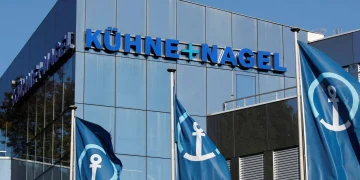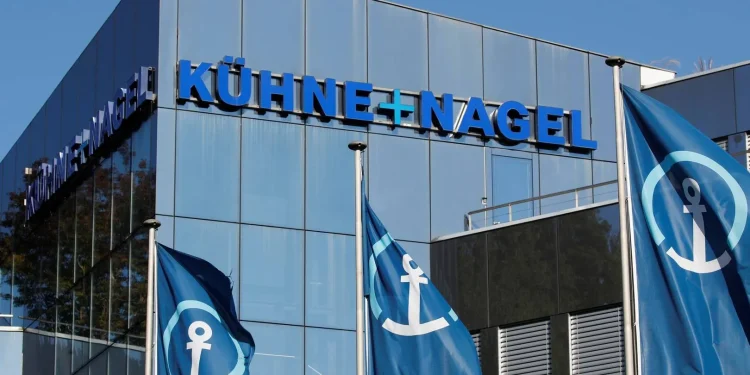By Maria Kalamatas | August 1, 2025
Singapore — In a move that caught regional staff by surprise, logistics giant Kuehne+Nagel announced this morning a major internal shake-up across its Asia-Pacific business unit, including consolidation of country offices and the relocation of key leadership roles to Singapore and Shanghai.
The announcement was made in an internal call just after 09:00 a.m. local time, as part of what the group described as a “strategic pivot toward leaner regional operations in a volatile economic landscape.”
Profit still solid, but margins are thinning
While K+N reported a 6.3% year-on-year increase in Q2 revenue across Asia, internal sources said operating margins had “tightened significantly,” especially in ocean forwarding. A senior manager, speaking on condition of anonymity, explained:
“Volumes are recovering, yes — but the cost of securing capacity, especially in intra-Asia lanes, is no longer what it was before 2022. And clients are aggressively renegotiating.”
Headcount cuts and role merges
The restructuring includes the merging of Thai and Malaysian back-office functions, and the elimination of 120 positions across customer service, documentation, and mid-level admin. At the same time, new director-level roles focused on e-commerce fulfillment and supply chain visibility have been created in Singapore.
“We’re not downsizing, we’re realigning,” said Isabelle Kramer, Regional Head of People and Transformation. “We are investing where it matters — tech, data, and proximity to cross-border trade flows.”
Client confidence remains — for now
Major retail clients in Korea, Vietnam, and Indonesia have been notified and reportedly support the direction, though some smaller exporters expressed concern about “reduced face-to-face access” in secondary markets.
A Vietnamese seafood exporter said,
“We used to speak to someone in Ho Chi Minh who understood our timing needs. Now, it’s all centralised. That could slow things.”
Trend across the industry
Kuehne+Nagel’s move is not isolated. DSV, DB Schenker, and CEVA have all initiated similar regional consolidations, shifting decision-making closer to major seaports and tech hubs. The trend points to a new regionalization of power inside global logistics groups, placing Asia not just as a market, but as a decision center.
The company insists this is not a cost-cutting play, but a shift in strategic agility. Still, many will be watching to see if leaner really means stronger — or simply thinner.























